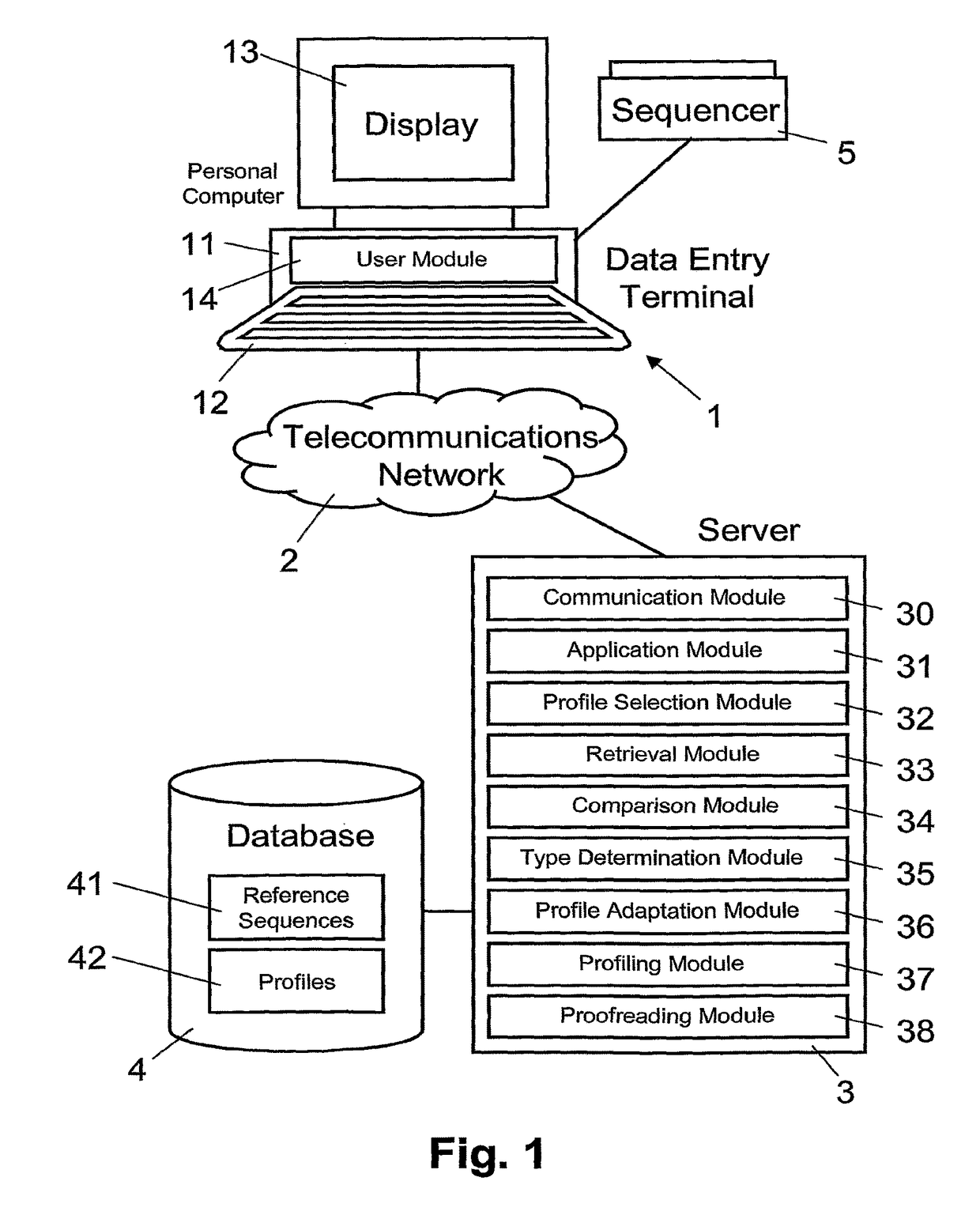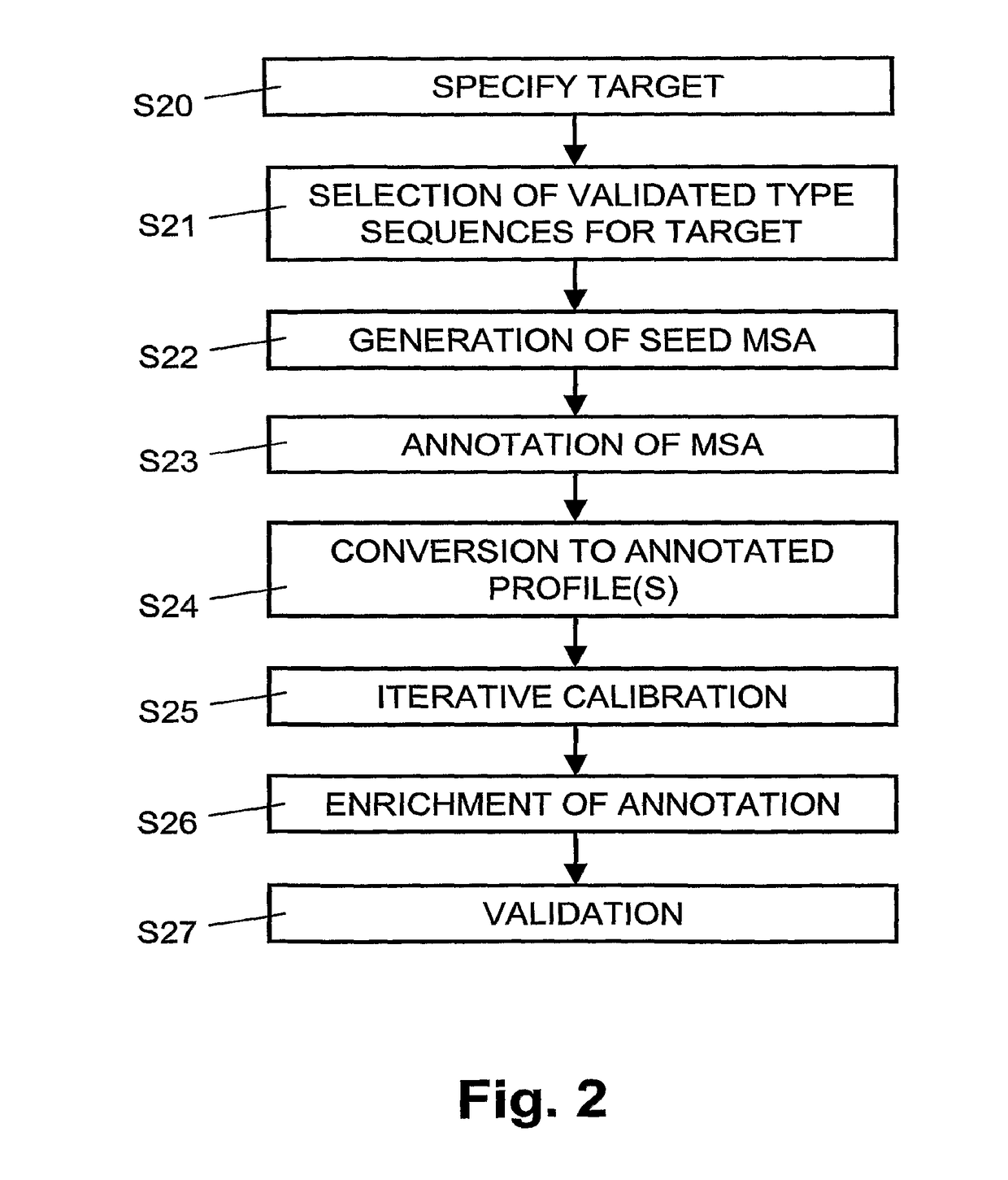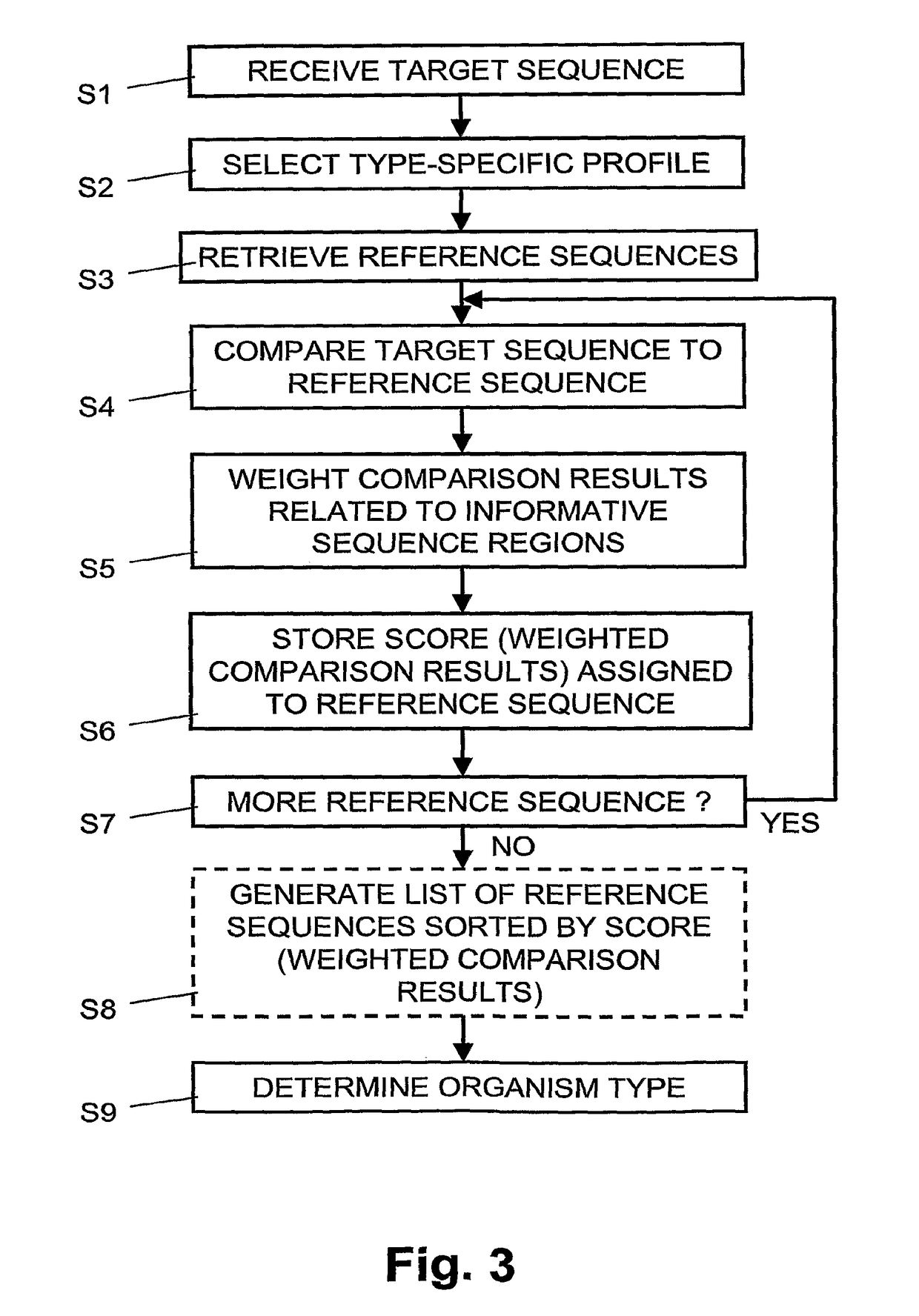Computer-Implemented Method and Computer System for Identifying Organisms
a computer system and organism technology, applied in the field of computer implementation methods and computer systems for identifying organisms, can solve the problems of sequence comparison-based methods that are very user-dependent, cannot discriminate, and require a level of expertise that is not easily found in diagnostic labs
- Summary
- Abstract
- Description
- Claims
- Application Information
AI Technical Summary
Benefits of technology
Problems solved by technology
Method used
Image
Examples
Embodiment Construction
[0019]In FIG. 1, reference numeral 1 refers to a data entry terminal. As illustrated in FIG. 1, the data entry terminal 1 includes a personal computer 11 with a keyboard 12 and a display monitor 13. As is illustrated schematically, in an embodiment, the personal computer 11 includes a user module 14 implemented as a programmed software module, for example an executable program applet that is downloaded from server 3 via telecommunications network 2.
[0020]Connected to the personal computer 11 is a conventional sequencer 5, which provides the personal computer 11 with sequence data of DNA (Deoxyribonucleic Acid) fragments. For example, the fragment sequence data includes sequence signals and associated information (e.g. peak values) of the DNA fragments, each sequence signal including signals of the four nucleotide types Adenine, Cytosine, Guanine, and Thymine (A, C, G, T). Generally, the terms “gene sequence”, “target sequence”, or “reference sequence” are used herein to refer to a s...
PUM
| Property | Measurement | Unit |
|---|---|---|
| distance | aaaaa | aaaaa |
| time | aaaaa | aaaaa |
| length | aaaaa | aaaaa |
Abstract
Description
Claims
Application Information
 Login to View More
Login to View More - R&D Engineer
- R&D Manager
- IP Professional
- Industry Leading Data Capabilities
- Powerful AI technology
- Patent DNA Extraction
Browse by: Latest US Patents, China's latest patents, Technical Efficacy Thesaurus, Application Domain, Technology Topic, Popular Technical Reports.
© 2024 PatSnap. All rights reserved.Legal|Privacy policy|Modern Slavery Act Transparency Statement|Sitemap|About US| Contact US: help@patsnap.com










